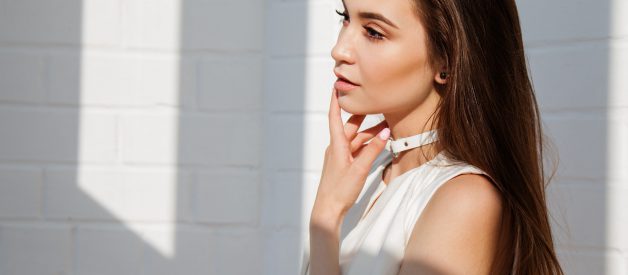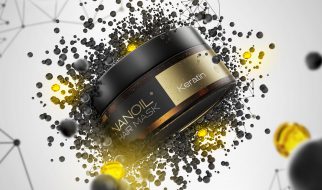PEH balance. You heard of it somewhere but you’re not sure where and what is it all about. It’s time to get to know better the components able to restore healthy and natural beauty to your hair. It’s important for your hair to have proper PEH balance.

Hairdressers confirm that PEH is the key to gorgeous hair. The secret to its health and flawless look. It’s the base for mindful hair care and contrary to what you might think, it’s nothing difficult, you just need to learn more about proteins, emollients, and humectants by knowing their role in hair care.
PEH balance, i.e. proteins, emollients, and humectants
The short term PEH comes from the three ingredients that are very important to the hair.
- PROTEINS – with various particle sizes which task is to restore hair and regenerate it.
- EMOLLIENTS – are mostly oils and occlusive substances that strengthen the natural hydrolipid barrier of hair so that water and nutrients remain locked in the hair.
- HUMECTANTS – are ingredients with the ability to hold and transport water deeper into the hair.
The fact that those go together is no coincidence. Our hair needs all of those substances at ones. The PEH balance delivers proteins, emollients, and humectants in amounts and proportions that meet the needs of the given hair type. For everyone, the importance will be stressed on something else, for example:
- damaged hair needs more proteins,
- dry hair needs more humectants,
- frizzy hair needs more emollients.
First. Proteins in hair care
Let’s start with proteins. Those are building blocks for our hair so if the hair is damaged proteins make the best rescue. Proteins are able to restore deficits in hair structure that also means restoring hair with a healthy look. Obviously, we differentiate a few types of proteins that are different mostly in particle size. You should consider the use of proteins that your hair actually needs.
➤ Proteins with large particles = high porosity hair
Those are larger in size so they don’t have the ability to reach deeper inside the hair and rather overbuild on top of it. Unless we discuss hair with significant deficits. Then those give the effect of smooth hair and indirectly moisturize it. Among proteins with large particles we can enumerate:
wheat proteins, milk proteins, silk proteins, oat proteins, soy proteins, elastin, collagen, and egg yolk (number one for our grandmas!).
➤ Hydrolyzed proteins = medium porosity hair
Those are proteins with medium size particles thanks to being hydrolyzed. Therefore, those can reach inner hair structures and repair it on the inside. Hydrolyzed proteins are best for medium porosity hair and we can enumerate as follows:
hydrolyzed wheat, hydrolyzed keratin, hydrolyzed silk, hydrolyzed collagen, hydrolyzed elastin.
➤ Aminoacids = low porosity hair
The smallest among proteins are amino acids able to reach deep inside the hair and repair its deepest structures. The most popular amino acids used in hair care are:
cysteine, arginine, alanine, methionine.
IMPORTANT! By delivering too much protein to hair regarding its actual need, it can lead to protein overload. It happens usually when you want to quickly regenerate hair and you use too many products rich in proteins. Protein overload makes your hair feel like it’s dry and brittle which you often take for the damage and… you get stuck in the vicious circle of making the same mistake and delivering even more protein.
Second. Humectants in hair care
Even though in PEH humectants are at the end, they should be discussed right now as their importance makes them take a spot right behind the proteins. Those are substances able to bind water particles (absorb them from the environment!) and retain them in hair. Humectants are particularly important for parched hair.
The most popular humectants are:
lactic acid, honey, glycerin, panthenol, urea, hyaluronic acid, flaxseed gel, aloe juice, vitamin E, propylene glycol.
However, you should keep in mind that humectants do not moisturize on their own, they need water for it. In order for the effects to be long-lasting, you should use humectants along with… emollients.
Third. Emollients in hair care
Last but not least are emollients, which are as important in your daily hair care routine! Our strands need emollients because those protect them against external factors and retain water delivered by humectants inside the hair. All hair types require emollients that is why it’s so important to use conditioners or natural oils.
The emollients that you can use on hair:
natural oils (argan, almond, jojoba, avocado, grape seed, sunflower seed, cottonseed, olive, and many many more), vegetable butter (shea, mango, coconut, cocoa), fatty alcohols, waxes, e.g. beeswax, paraffine, and silicones.
The most important tasks of emollients on hair:
- retaining water in the hair,
- smoothing out and softening,
- gloss restoration,
- prevent frizz,
- easier combing,
- protection against harmful factors.



